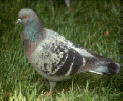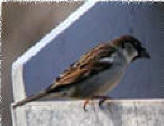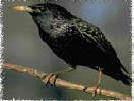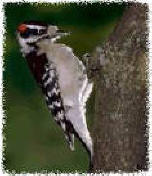|
|
||||||||||||||||||||||||||
|
|
||||||||||||||||||||||||||
|
|
||||||||||||||||||||||||||
|
Southwestern States Commercial Service 1.877.828.2473
DID YOU KNOW ? A feral pigeon can excrete over 25 lbs of waste a year. DID YOU KNOW ? A pigeons feathers weight more than the pigeons bones. DID YOU KNOW ? A flock of 500 starlings can excrete over a ton (2,000 lbs) of waste a month.
|
 Pest control removal birds pigeons, sparrows, starlings woodpeckers
Pest Birds That You May Encounter
Pest birds which are generally considered a nuisance under certain circumstances are pigeons, sparrows, swallows, starlings and woodpeckers.
Why Control pest birds? The accumulation of droppings in some of these species in particular are unsightly, effecting the image of the building, causing damage to products, eating away at concrete or brick surfaces, metals and painted surfaces and can be a safety and health liability or slip and fall hazard to you, your family, customers and employees alike. To gain control of most birds it's necessary to look at what
they are doing to create a nuisance. Are they nesting on the roof tops, under
the eaves or Ac units or are they on some part of the structures where the
droppings are landing in an undesirable location like the entryway to a home or
business creating slip and fall hazards and liabilities. Check out the Chart on the different types of parasites and infectious diseases associated with pest birds. Check out these Dirty bird pictures If you have any questions you may want to check out our FAQ section.
UNDERSTANDING BIRD PRESSURE Throughout our web site there are references to "Bird Pressure". "Bird Pressure" is how hard birds will fight to regain their former territory. Proper product selection and ultimate job success depends on knowing the pressure at a site. It is important to understand that pressure can vary over different parts of a building or job site. For example, recessed areas of a building where birds are nesting will have higher bird pressure than the flat part of the roof where birds land occasionally. Different products can be used for combat of the problem areas. High Pressure (Hardest to bird-proof) Birds are very committed to a high-pressure site. Chances are there were born on this exact site, thus they consider this area (usually a protected overnight roost) to be home. High pressure sites always provide the birds shelter from the elements. Medium Pressure Birds are less committed to a medium pressure site. This is more likely an area where they observe food opportunities, like over a garbage dumpster, or rest in the afternoon. They like being there for many different reasons and they are fairly committed to the site, but they don't nest there. Light Pressure Light pressure sites are take-it-or-leave-it sites for pest birds. They may stop by occasionally after a meal to take in the warmth of the afternoon sun, like the parapet around an office building. The absence of food and shelter makes it a casual, daytime loafing site. - Leave dog food or water out during the day. - Lawn seeding or thatching - free food. - Allow overgrowth on palm trees - great protected nesting. - Standing water at base of planters - easy water access - Feeding wild birds - pigeons will push small birds out. - Having a home or business with pillars, roof overhangs, signage or A/c units that provide protected nest sites. - Not calling Arizona Wings N' Stings when the first few birds move in and start to nest. Please keep in mind that in most cases, pigeons or birds that you see nesting on your property, have done so for a long time before you see them and it may take a few days to many weeks for the nesting or the very dedicated birds to move away. If the bird was born at the site it is even harder. When birds try to get past our work, then realize that there is no longer any comfortable places to set up residence, they will usually move away from your property to another unprotected location on your building or if all locations are closed off they will move to another structure or building. Birds are living creatures with small brains that operate mostly by habit and instinct. No one can predict what they will do or where they will go. In short - The best method of eradication on a structure is simply taking away the nesting and roosting sites making it too hard or uncomfortable for the pest birds to stay on your property. Call Arizona Wings N' Stings today at 602-942-6550 or 480-969-2337 or outside of Maricopa County 877-828-2473 for an estimate or inspection on what we can do to help you with your pesky bird problems. |
|||||||||||||||||||||||||
|
Copyright © 2004 Arizona Wings-N-Stings All rights reserved. Revised: 10/09/10. |
||||||||||||||||||||||||||






